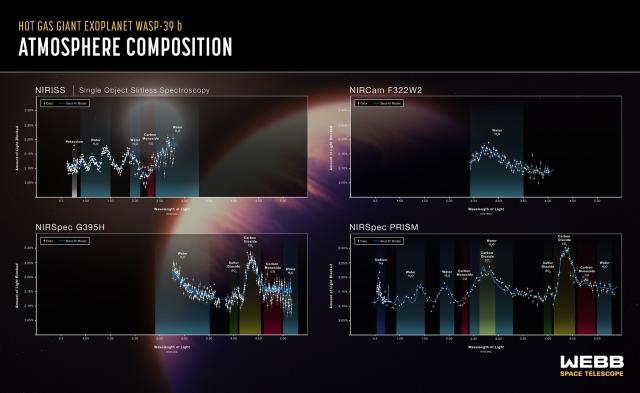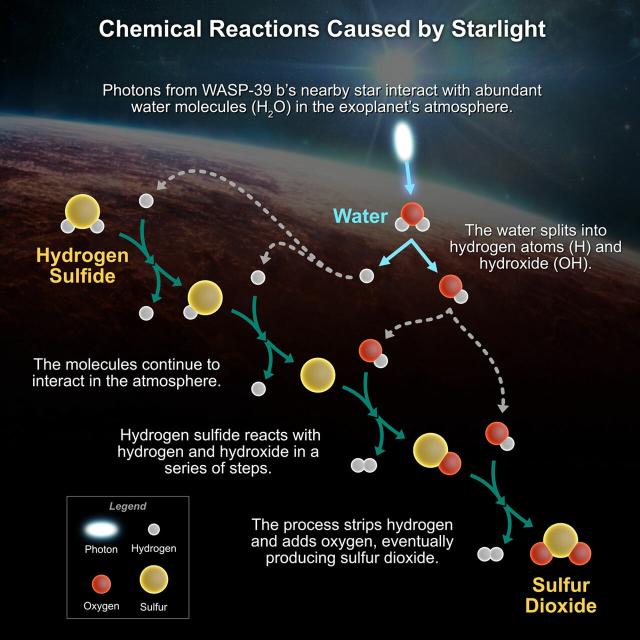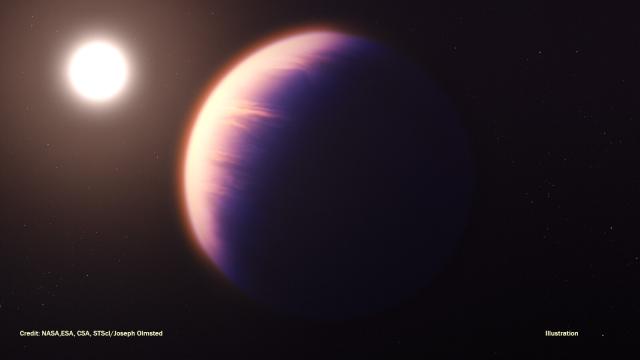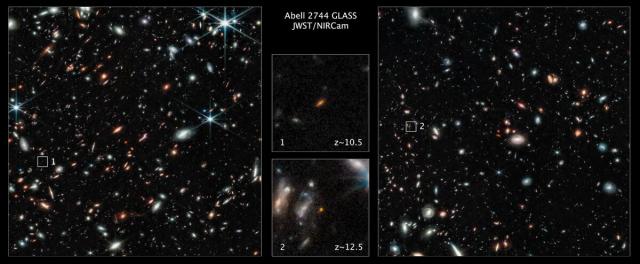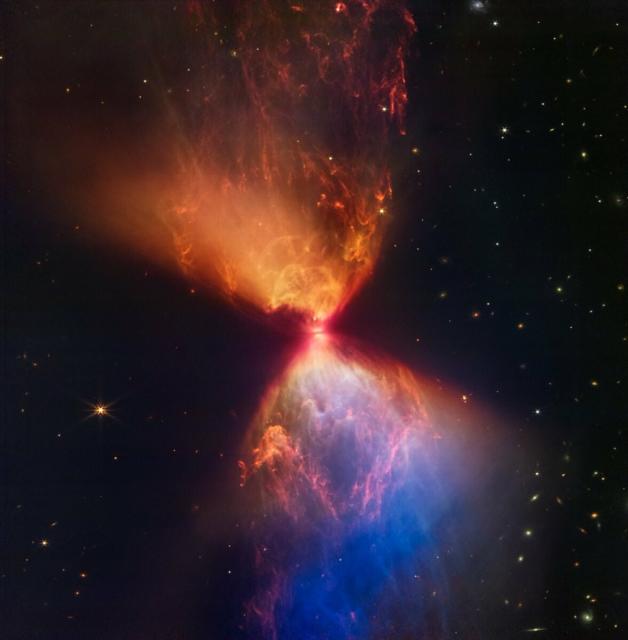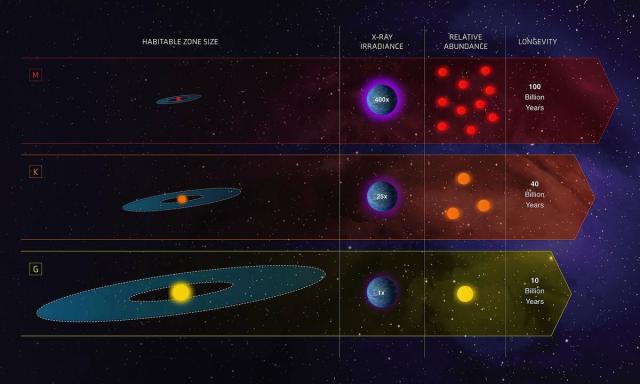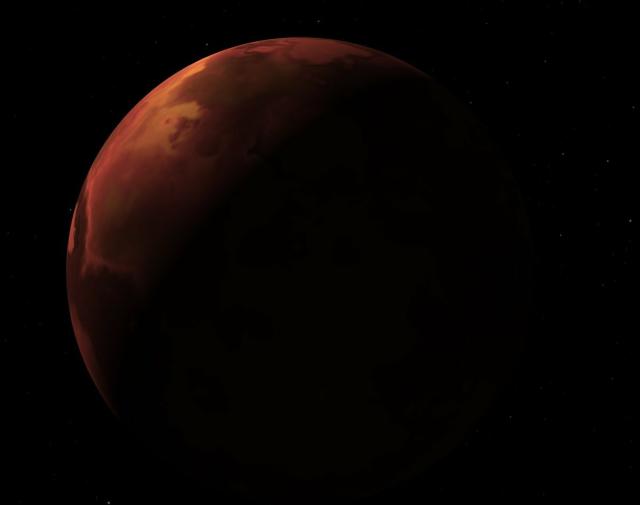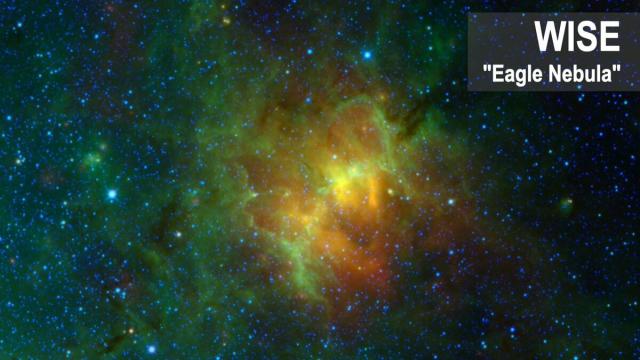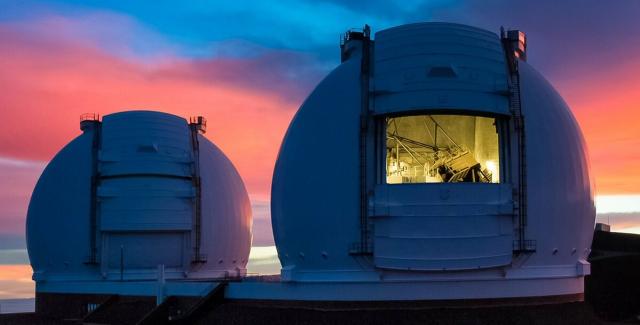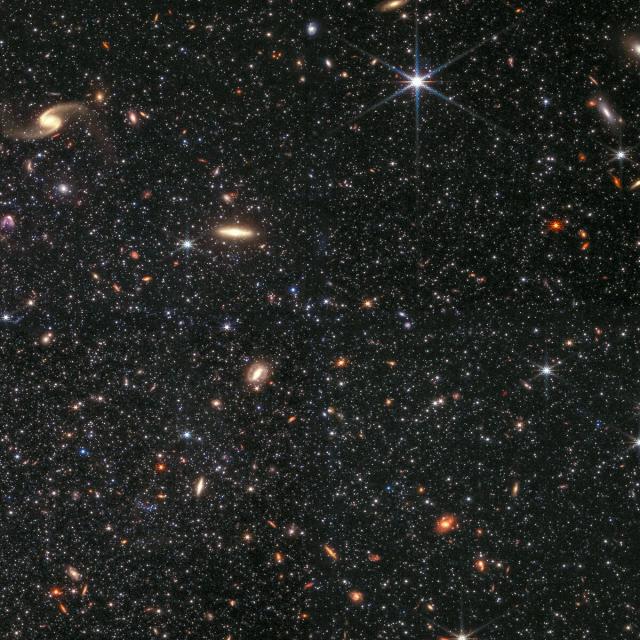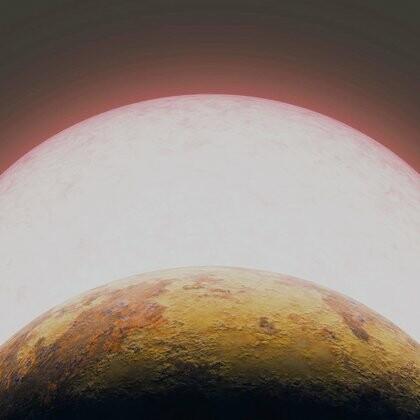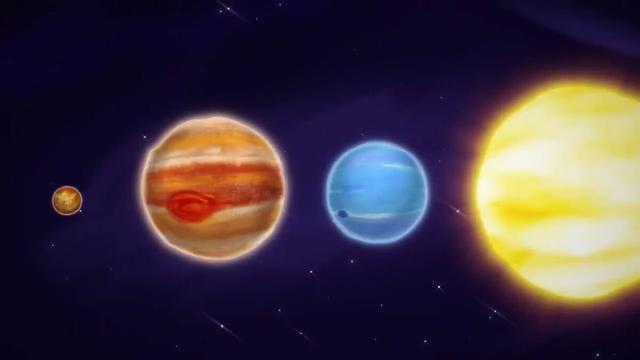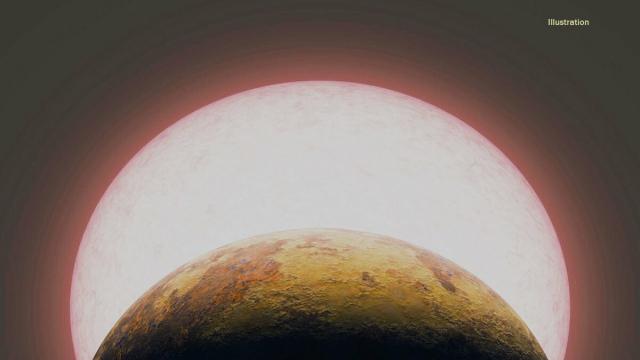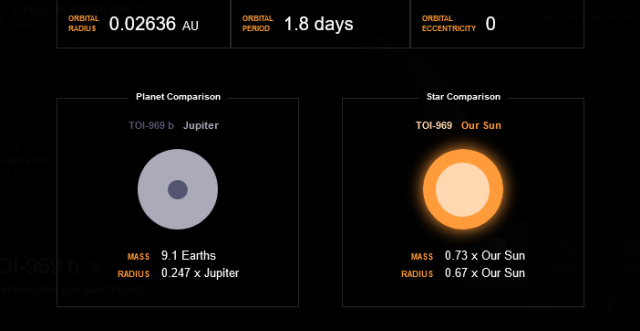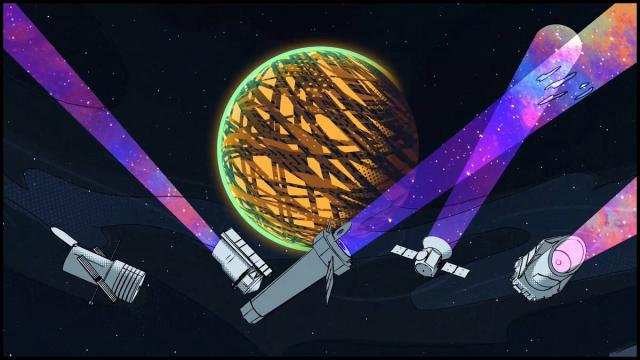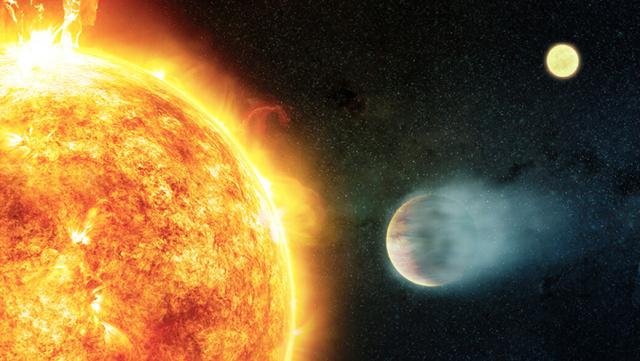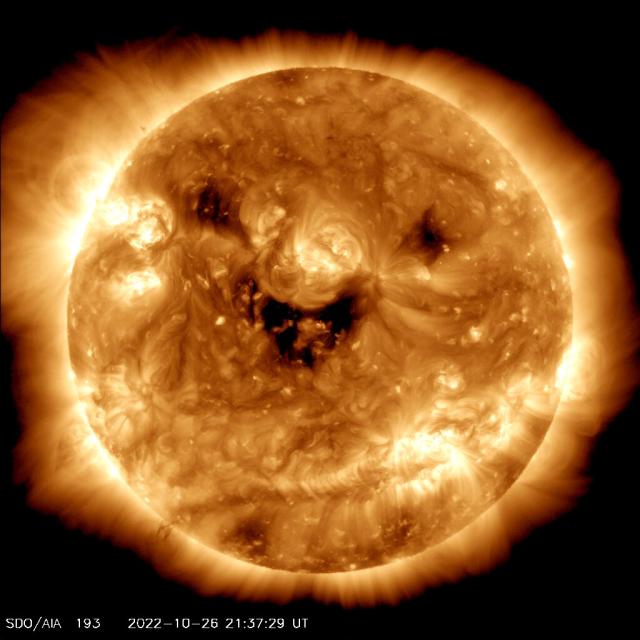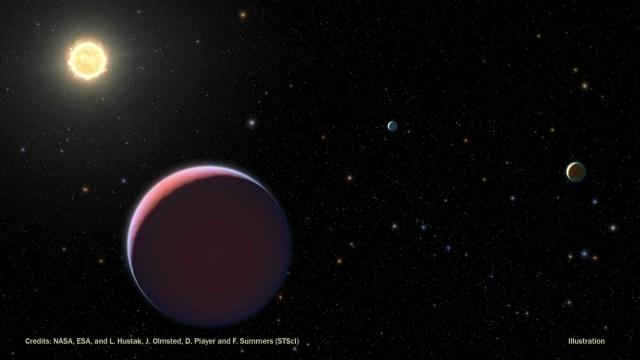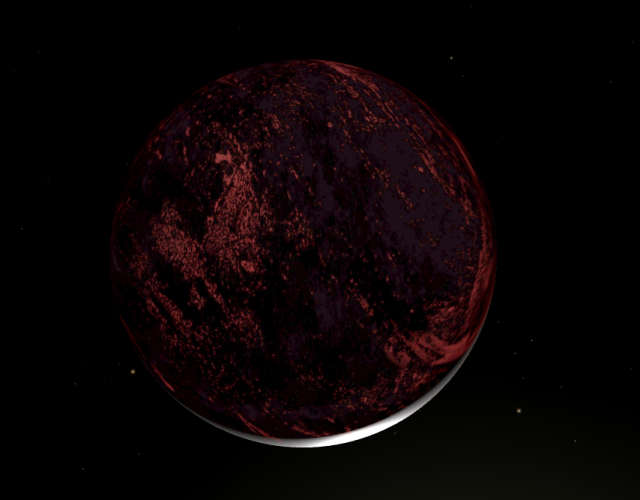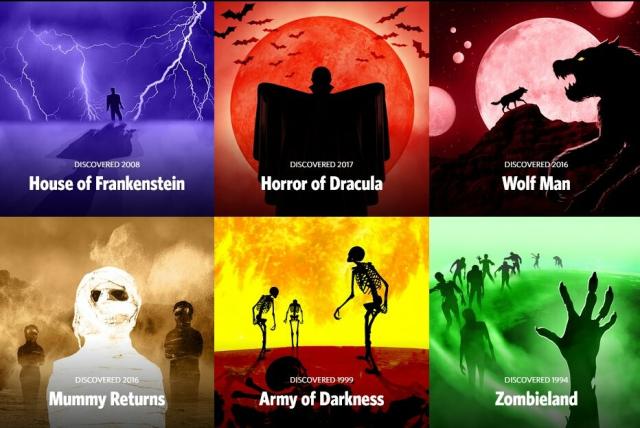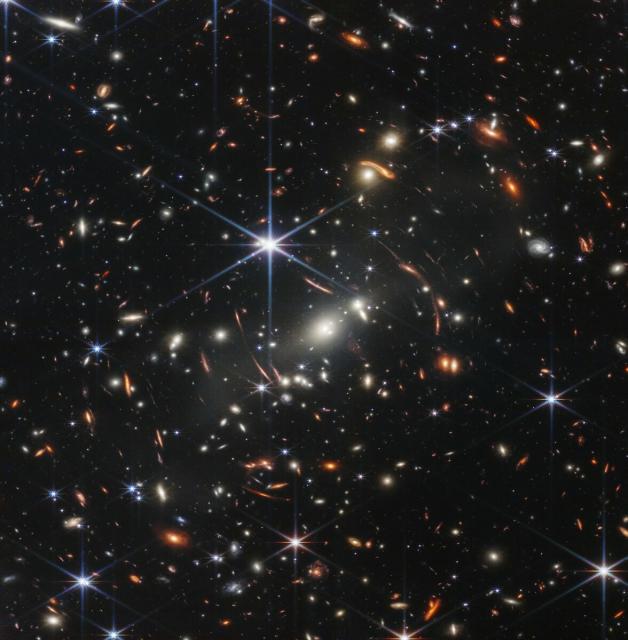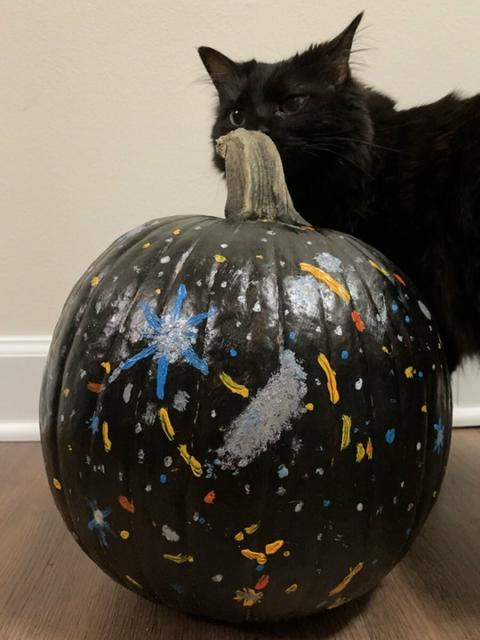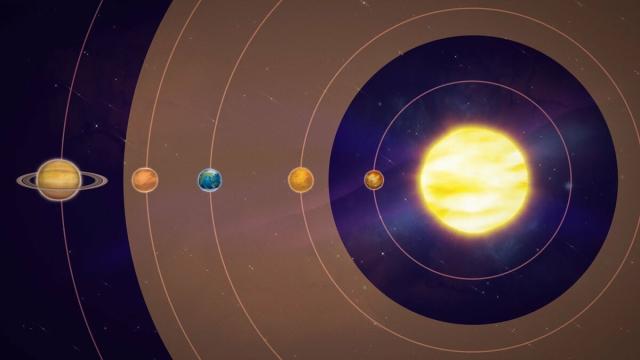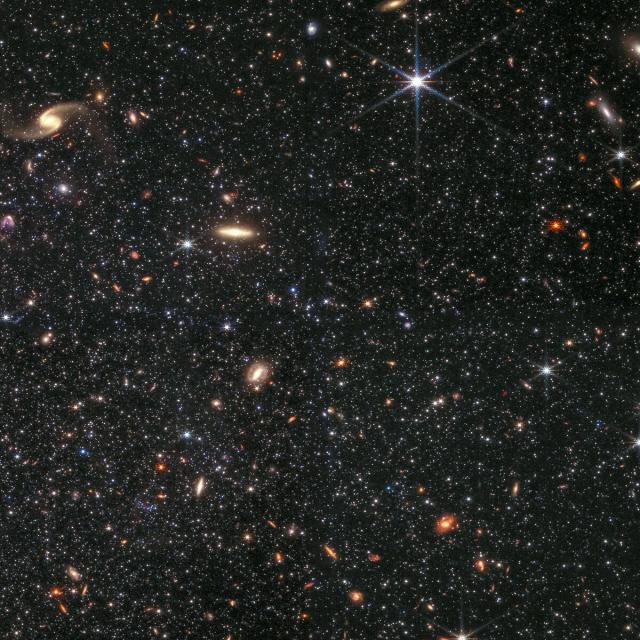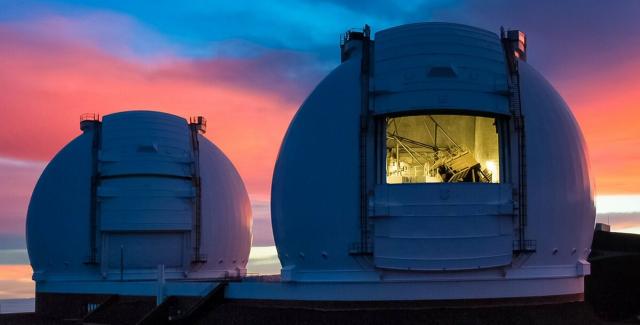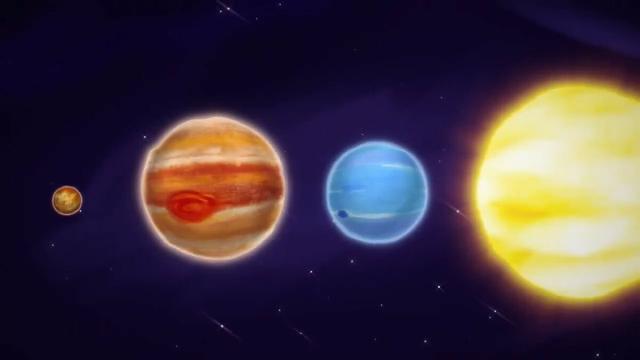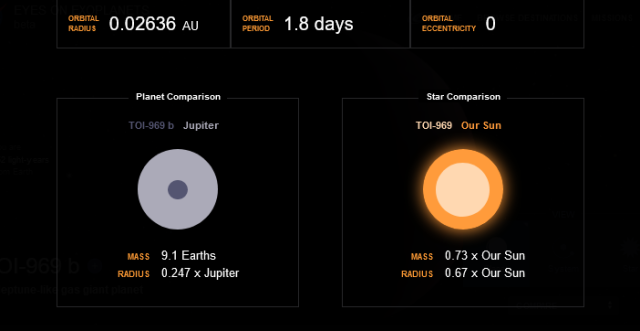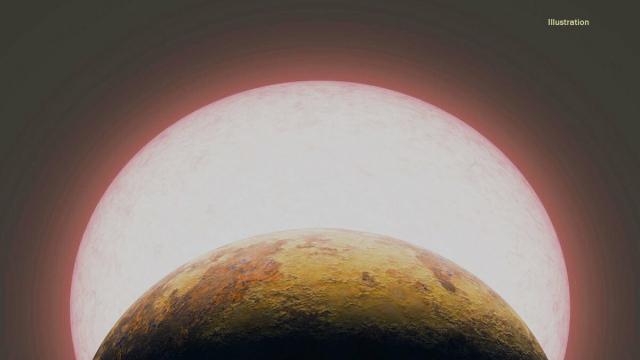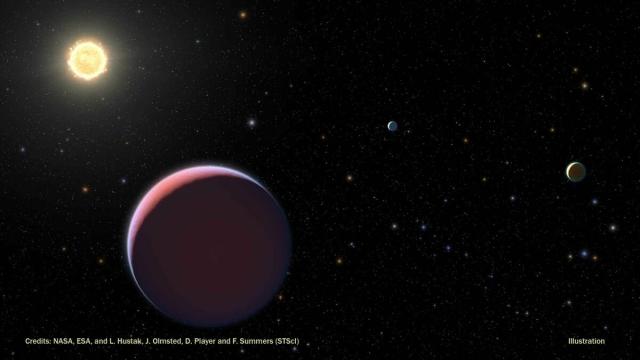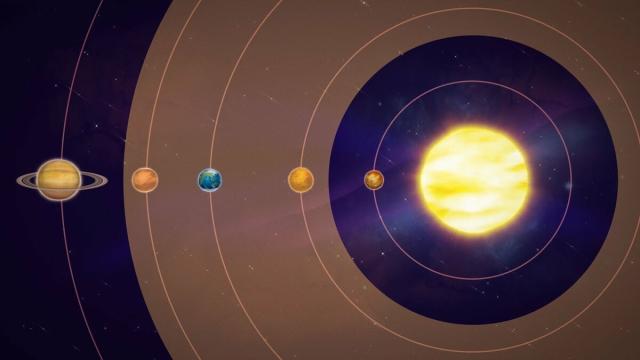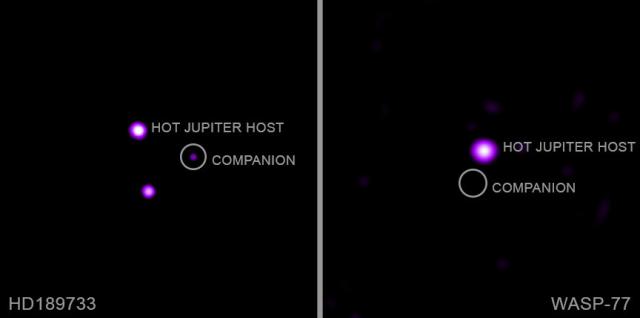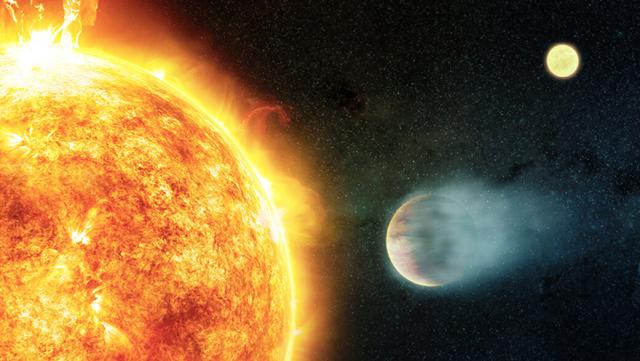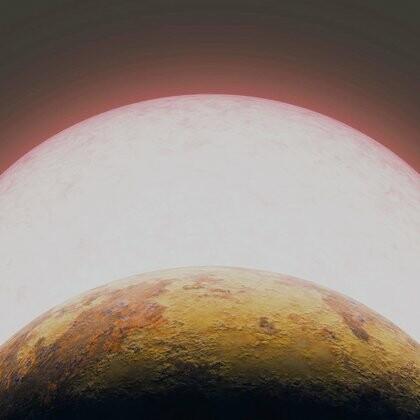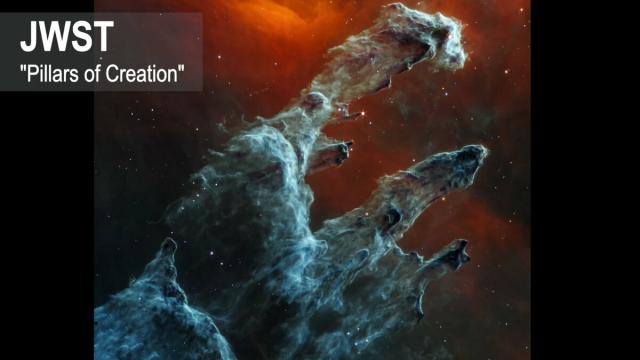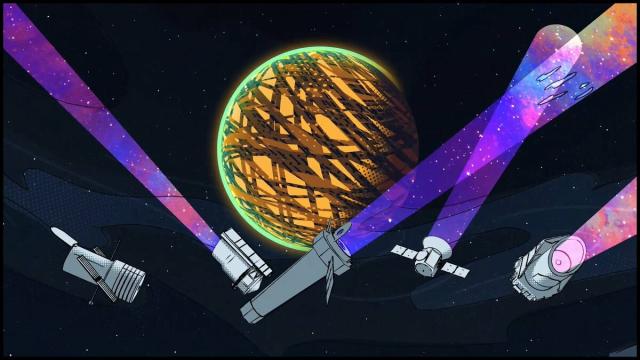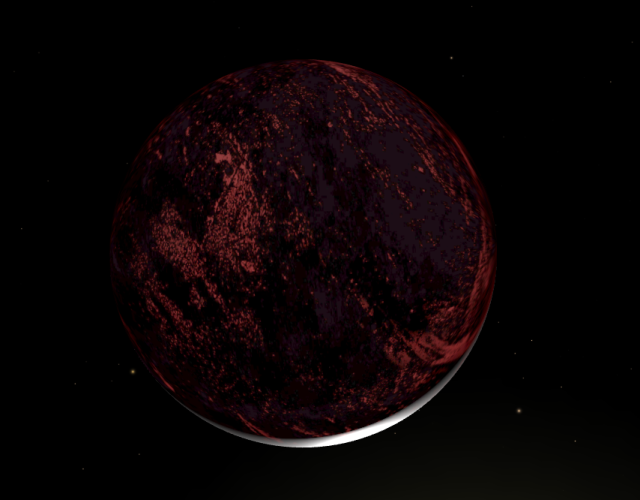Search
Items tagged with: NASAExoplanets
#NASAExoplanets
NASA, ESA Reveal Tale of Death, Dust in Orion Constellation
In a tale of cosmic proportions, the region is being transformed by the massive stars that live and die within it.NASA Jet Propulsion Laboratory (JPL)
@NASAWebb's unprecedented observations of the exoplanet WASP-39 b read fingerprints of atoms and molecules, as well as signs of active chemistry and clouds! This Saturn-size giant orbits its star closer than Mercury is to our Sun. go.nasa.gov/3OqkAaI
#NASAExoplanets
NASA's Webb Reveals an Exoplanet Atmosphere as Never Seen Before
Webb's firsts keep coming: Observations of WASP-39b show fingerprints of atoms and molecules, as well as signs of active chemistry and clouds.Exoplanet Exploration: Planets Beyond our Solar System
#NASAExoplanets
#NASAExoplanets
NASA’s Webb Draws Back Curtain on Universe’s Early Galaxies
A few days after officially starting science operations, NASA’s James Webb Space Telescope propelled astronomers into a realm of early galaxies, previously hidden beyond the grasp of all other telescopes until now.Jamie Adkins (NASA)

NASA’s Webb Catches Fiery Hourglass as New Star Forms
NASA’s James Webb Space Telescope has revealed the once-hidden features of the protostar within the dark cloud L1527, providing insight into the beginnings of a new star.Jamie Adkins (NASA)
NASA’s Webb Catches Fiery Hourglass as New Star Forms
NASA’s James Webb Space Telescope has revealed the once-hidden features of the protostar within the dark cloud L1527, providing insight into the beginnings of a new star.Jamie Adkins (NASA)
Goldilocks Stars Are Best Places to Look for Life
In the search for life beyond Earth, astronomers look for planets in a star's "habitable zone" — sometimes nicknamed the "Goldilocks zone" — where temperatures are just right for liquid water to exist on a planet's surface.Exoplanet Exploration: Planets Beyond our Solar System
Keck Observatory's Newest Planet Hunter Puts Its Eye on the Sky
State-of-the-art instrument will find and study missing smaller planets.California Institute of Technology
Discovery Alert: Massive Planet is a 'Hulk' among Super-Earths
New observations show that a previously identified exoplanet, TOI-1075 b, is among the most massive super-Earths found so far.Exoplanet Exploration: Planets Beyond our Solar System
Super-Earth | Planet Types – Exoplanet Exploration: Planets Beyond our Solar System
Super-Earths – a class of planets unlike any in our solar system – are more massive than Earth yet lighter than ice giants like Neptune and Uranus, and can be made of gas, rock or a combination.Exoplanet Exploration: Planets Beyond our Solar System
NASA's Chandra: Planets Can Be Anti-Aging Formula for Stars
Planets can force their host stars to act younger than their age, according to a new study of multiple systems using NASA’s Chandra X-ray Observatory.Beth Ridgeway (NASA)
Discovery Alert: Massive Planet is a 'Hulk' among Super-Earths
New observations show that a previously identified exoplanet, TOI-1075 b, is among the most massive super-Earths found so far.Exoplanet Exploration: Planets Beyond our Solar System
‘Heroic' Space Telescopes See Skies Packed With Planets
A superhero team of space telescopes has been working tirelessly to discover exoplanets and unveil their secrets. Now, a new superhero joins the team—the James Webb Space Telescope. What will it find?Exoplanet Exploration: Planets Beyond our Solar System
NASA's Chandra: Planets Can Be Anti-Aging Formula for Stars
Planets can force their host stars to act younger than their age, according to a new study of multiple systems using NASA’s Chandra X-ray Observatory.Beth Ridgeway (NASA)
Discovery of eight planets makes alien system the first to tie with our solar system
Our solar system now is tied for most number of planets around a single star, with the recent discovery of an eighth planet circling Kepler-90, a Sun-like star 2,545 light years from Earth.Exoplanet Exploration: Planets Beyond our Solar System
Strange New
A world with two suns, a lava world and an "Earth cousin" are just some of the exoplanets we've discovered.Exoplanet Exploration: Planets Beyond our Solar System
Galaxy of Horrors | Explore – Exoplanet Exploration: Planets Beyond our Solar System
NASA’s Exoplanet Exploration Program, the search for planets and life beyond our solar system.Exoplanet Exploration: Planets Beyond our Solar System
Exoplanet Exploration: Planets Beyond our Solar System
NASA’s Exoplanet Exploration Program, the search for planets and life beyond our solar system.Exoplanet Exploration: Planets Beyond our Solar System
The Habitable Zone | The Search For Life – Exoplanet Exploration: Planets Beyond our Solar System
Have you heard of the habitable zone? You're in one right now. It's the distance from a star where you might find exoplanets with liquid surface water. We use the habitable zone to help focus our search for life beyond Earth.Exoplanet Exploration: Planets Beyond our Solar System
Keck Observatory's Newest Planet Hunter Puts Its Eye on the Sky
State-of-the-art instrument will find and study missing smaller planets.California Institute of Technology
Super-Earth | Planet Types – Exoplanet Exploration: Planets Beyond our Solar System
Super-Earths – a class of planets unlike any in our solar system – are more massive than Earth yet lighter than ice giants like Neptune and Uranus, and can be made of gas, rock or a combination.Exoplanet Exploration: Planets Beyond our Solar System
Discovery Alert: Massive Planet is a 'Hulk' among Super-Earths
New observations show that a previously identified exoplanet, TOI-1075 b, is among the most massive super-Earths found so far.Exoplanet Exploration: Planets Beyond our Solar System
Strange New
A world with two suns, a lava world and an "Earth cousin" are just some of the exoplanets we've discovered.Exoplanet Exploration: Planets Beyond our Solar System
The Habitable Zone | The Search For Life – Exoplanet Exploration: Planets Beyond our Solar System
Have you heard of the habitable zone? You're in one right now. It's the distance from a star where you might find exoplanets with liquid surface water. We use the habitable zone to help focus our search for life beyond Earth.Exoplanet Exploration: Planets Beyond our Solar System
NASA's Chandra: Planets Can Be Anti-Aging Formula for Stars
Planets can force their host stars to act younger than their age, according to a new study of multiple systems using NASA’s Chandra X-ray Observatory.Beth Ridgeway (NASA)
Discovery of eight planets makes alien system the first to tie with our solar system
Our solar system now is tied for most number of planets around a single star, with the recent discovery of an eighth planet circling Kepler-90, a Sun-like star 2,545 light years from Earth.Exoplanet Exploration: Planets Beyond our Solar System
NASA's Chandra: Planets Can Be Anti-Aging Formula for Stars
Planets can force their host stars to act younger than their age, according to a new study of multiple systems using NASA’s Chandra X-ray Observatory.Beth Ridgeway (NASA)
Discovery Alert: Massive Planet is a 'Hulk' among Super-Earths
New observations show that a previously identified exoplanet, TOI-1075 b, is among the most massive super-Earths found so far.Exoplanet Exploration: Planets Beyond our Solar System
‘Heroic' Space Telescopes See Skies Packed With Planets
A superhero team of space telescopes has been working tirelessly to discover exoplanets and unveil their secrets. Now, a new superhero joins the team—the James Webb Space Telescope. What will it find?Exoplanet Exploration: Planets Beyond our Solar System

